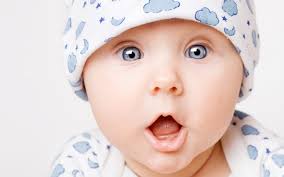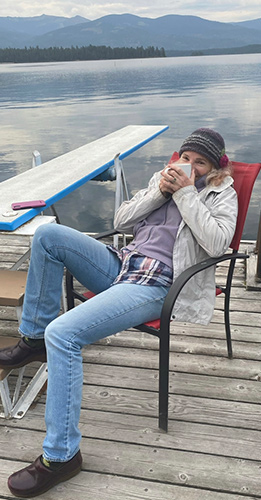In a perfect world, women would wait until they were done childbearing and breast feeding prior to having breast implants, mostly because pregnancy and breast feeding can really change the breast. In the real world, many young women opt for breast enhancement long before having children. I am often asked what effect childbearing will have on an implanted breast. My answer? Some ladies do great and some don’t. I don’t have a crystal ball. I do tell patients that whatever happens to their breasts, I can likely fix it!
I am also often asked about the effect implants have on breast feeding and if feeding a baby from an augmented breast is safe for the baby. Here is what I know based on reading the literature and listening to patients for 25+ years.
In the recent “Cohort Study to Assess the Impact of Breast Implants on Breastfeeding” conducted by lactation specialists and doctors in Argentina published in the December 2016 Plastic and Reconstructive Surgery Journal (PRS Vol. 138, 1152-1159, 2016) 100 women with breast implants and 100 women without breast implants were followed from the time of childbirth through about 3 months. All of these women received instruction and encouragement to breast feed by lactation specialists. Here’s what was found: 99 of the 100 women without implants were able to breast feed. 93 of the 100 women with breast implants were able to breast feed. This was not found to be statistically significant. At 3 months, more women without breast implants were breast feeding exclusively than the women with breast implants. This was statistically significant. The study showed no correlation in the type of implant or incision location as to the ability or inability to breast feed. Sooo…it would appear that breast implants may impact the quantity of milk production and it may be necessary to supplement. I have been telling my young patients for years if they will feel like a terrible mother if they are unable to breast feed, they may want to wait on that breast augmentation. I think based on this study I will change that to breast feed exclusively. I also over share with these patients that I am a lactational failure and my children (now 20, 20 and 16) have had one ear infection, 2 broken bones, one cavity, one torn thumb ligament between them and all are healthy and happy. And I felt like a horrible mother for awhile but got over it. I also refer them to a article that appeared in the Atlantic in 2009: The Case Against Breast Feeding written by Hanna Rosen, the mother of three breast fed children. It’s an fact filled and thoughtful look at this very prickly topic. It made this lactational failure feel a little better!

Is it dinner time?
And lately I have been questions about the safety of breast milk from an implanted breast. I think some of this is being stirred up by the breast implant illness community which is doing its best to have breast implants banned. One of the breast implant illness web sites has an extensive diatribe about this and there is also a recent alarmist Instagram post on this topic. In doing a little research of the peer reviewed literature, I did come up with a paper regarding silicone gel implants and breast milk. This paper (PRS Vol. 102, 528-522, 1998) looked at silicon levels (silicon is the element that silicone is made of) in breast milk in patients with and without breast implants and also in cow’s milk and various formulas. This study was done way back in 1997 at the University of Toronto. The researchers looked at the milk of 15 mothers of newborns with silicone gel implants and 34 mothers of newborns without implants. The silicon levels in the implant group was lower than the non-implant group although the difference was not statistically significant. Now here’s the kicker. The silicon levels in cow’s milk (presumably the cows did not have breast implants although that is not stated in the paper) was over 13 times that of the mother’s milk! Twenty six formulas were tested and they ranged from 13 times to 433 times that of mother’s mild. The soy-based formulas had some of the highest levels!
How can this be???? Again this study did not measure silicone (the rubbery stuff made from elemental silicon). Silicone is a big fat molecule and cannot be dissolved in solution and therefore cannot be measured. Silicon, the element, can be measured. And silicon is everywhere. Silicon is the second most abundant element on the earth’s crust, second only to oxygen. Silicone, the man made rubbery stuff, is also very abundant in medical devices, prosthetics, pharmaceuticals and many consumer products (I love my silicone oven glove). Oh, and it’s used to make nipple shields for breast feeding moms and bottle nipples for bambino.
The other issue is the location of breast implants in relation to the milk producing glands and the lactiferous (great word) ducts. Implants on top of the muscle sit under the breast tissue and are in contact with some of the milk producing gland but are well away from the ducts. Implants under the muscle are not really in contact with the breast much at all. I don’t have the imagination to visualize big gooey silicone blobs getting though the wall of an intact implant, thorough the fibrous scar capsule and into the milk producing glands and travelling out of the ducts. I have removed a bajillion ruptured gel implants and have never seen or heard of leakage of gel from one of my patient’s nipples.
Based on this information and my intimate knowledge of the location of breast implants in relation to the milk glands and milk ducts, I would not advise patients with intact silicone gel implants to forego breastfeeding because of fear of some sort of contamination of their breast milk. If an implant is ruptured, I think it would be prudent to bottle feed.
So there you have it, my take on breast feeding and breast implants. Mothering is a wonderful, mysterious and complex task and sometimes doesn’t include lactation (and sometimes doesn’t even include giving birth). I think most patients are very capable of making up their own minds about if and when they desire breast enhancement with breast implants.
Thanks for reading! Dr. Lisa Lynn Sowder



 @lisalynnsowder
@lisalynnsowder
